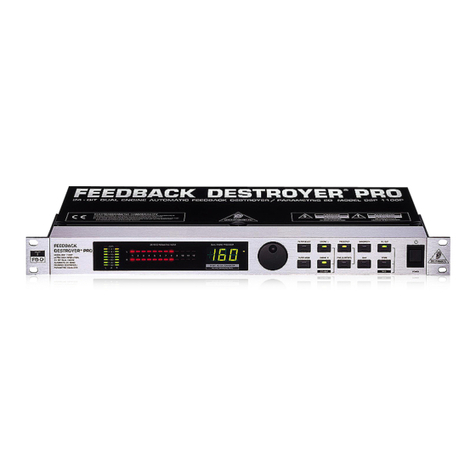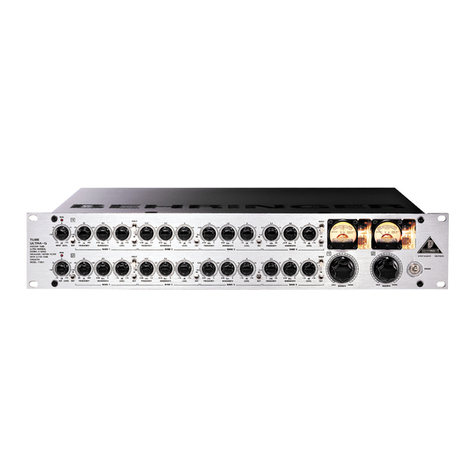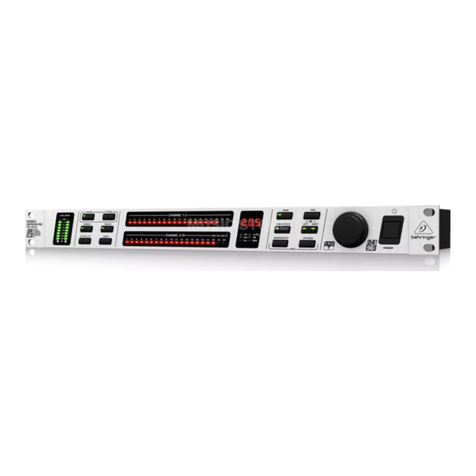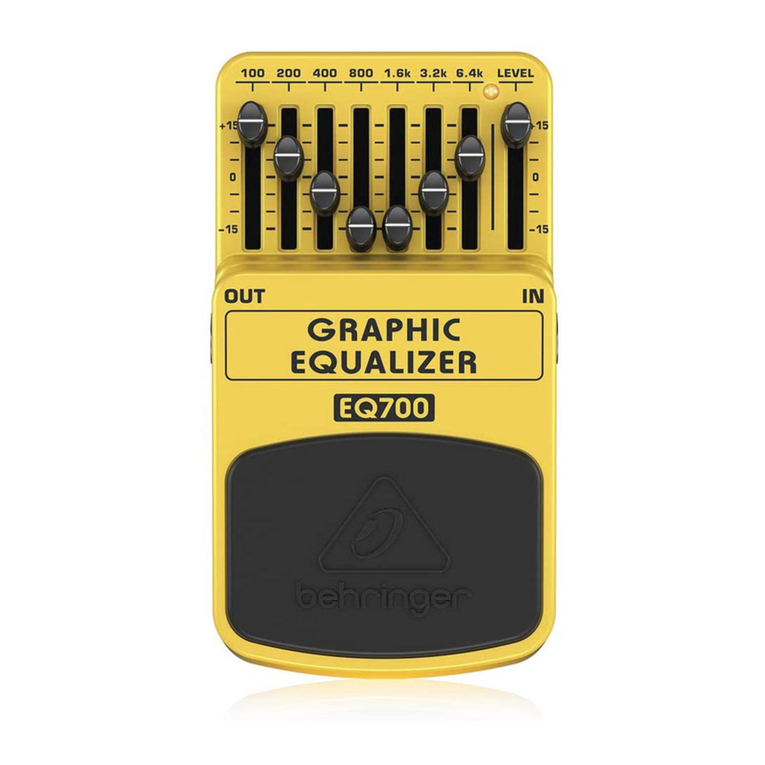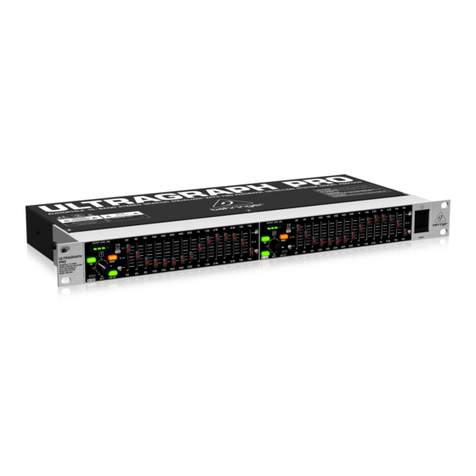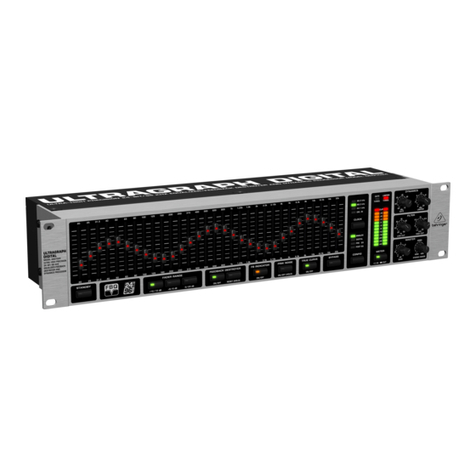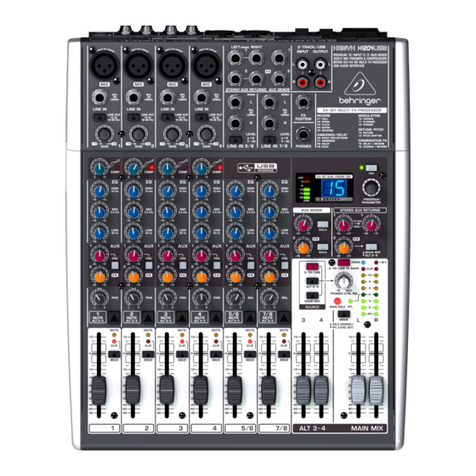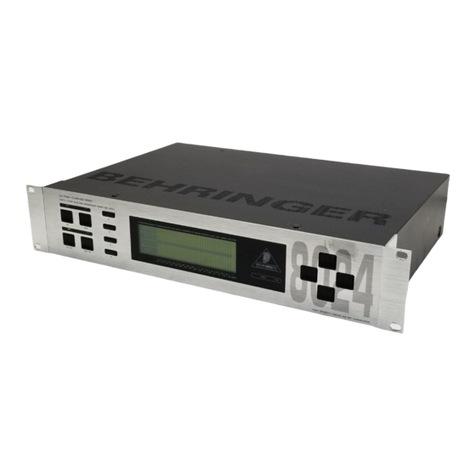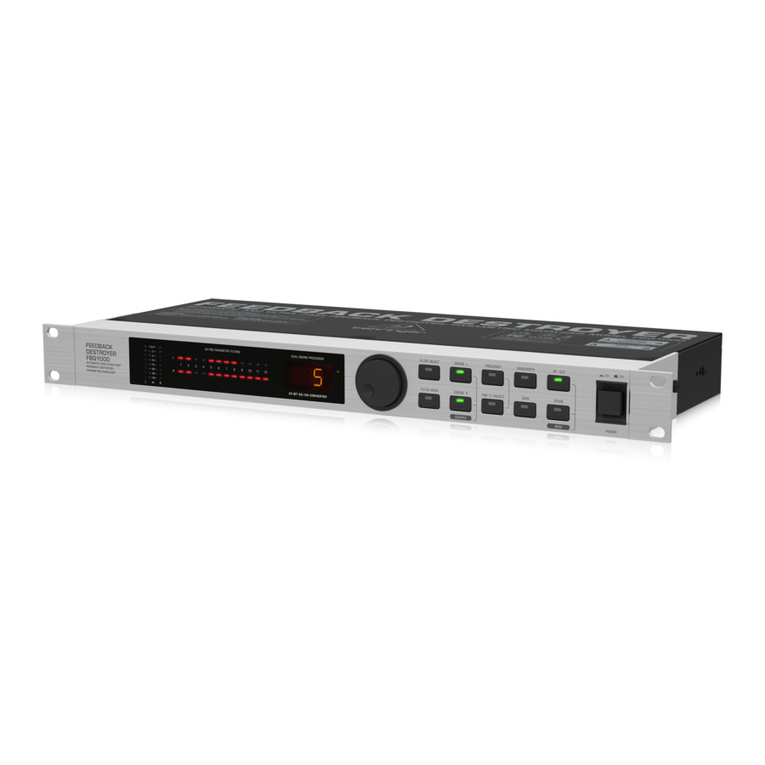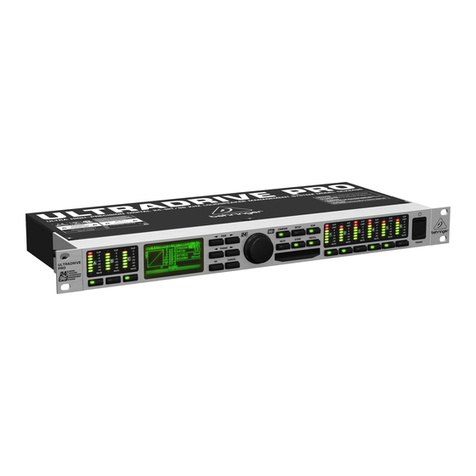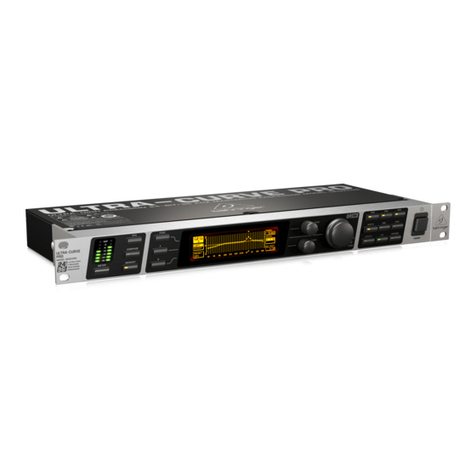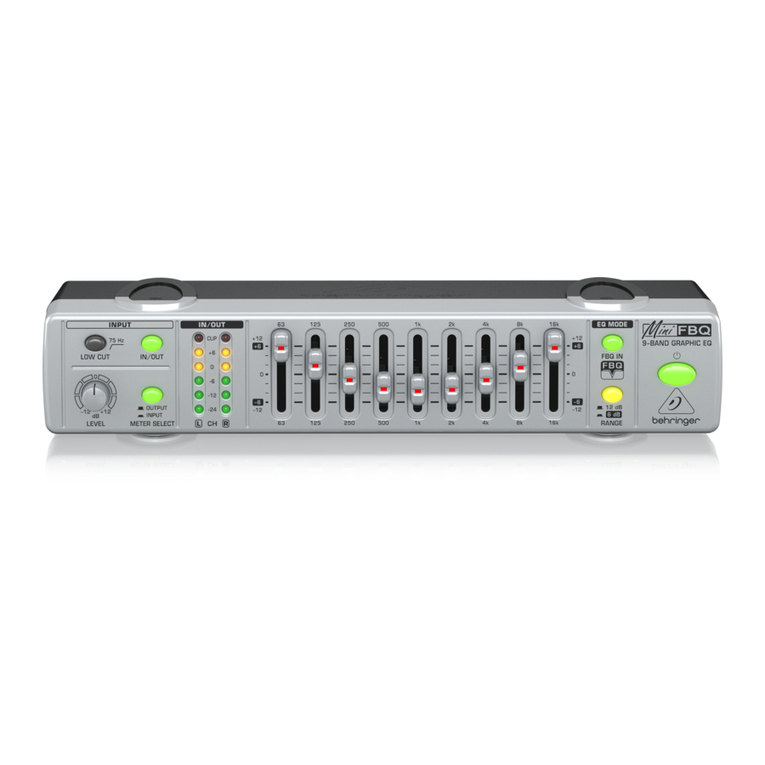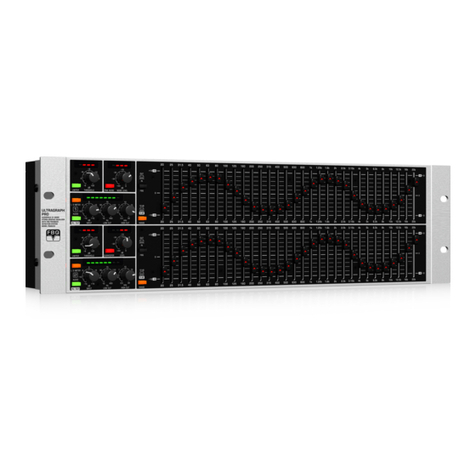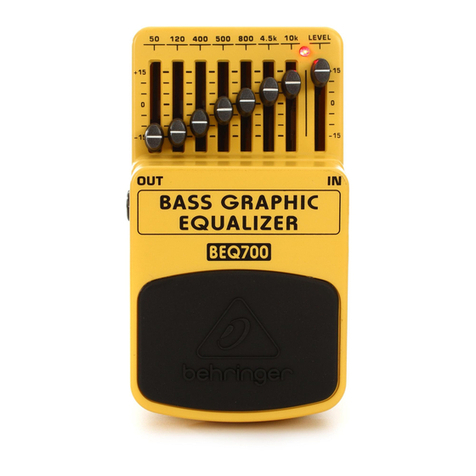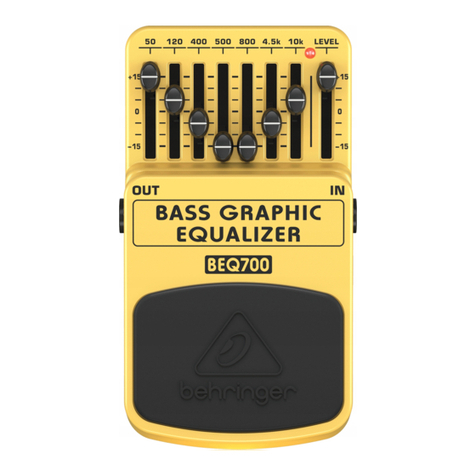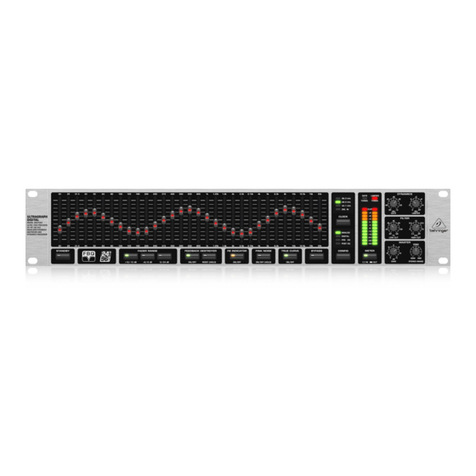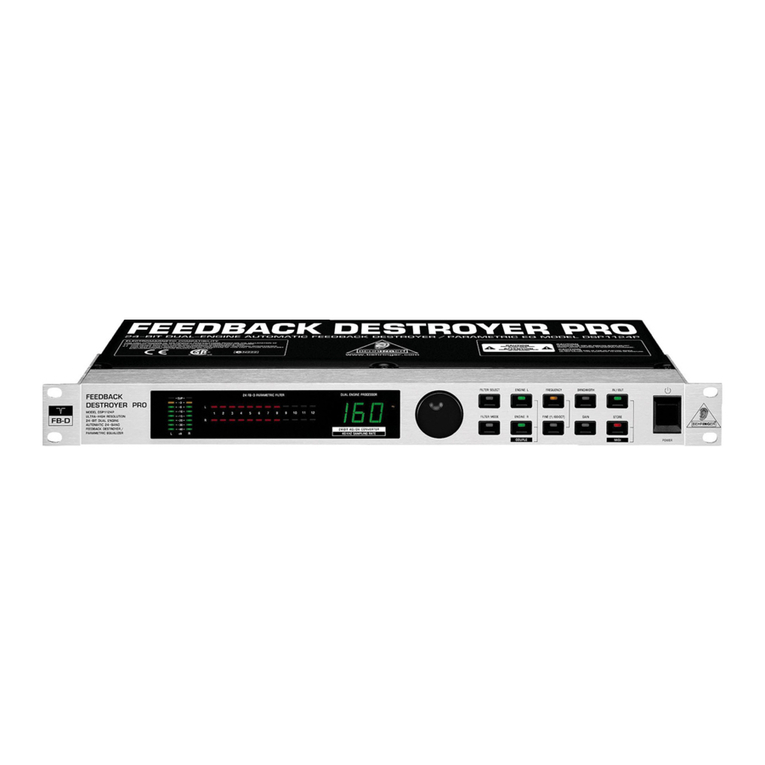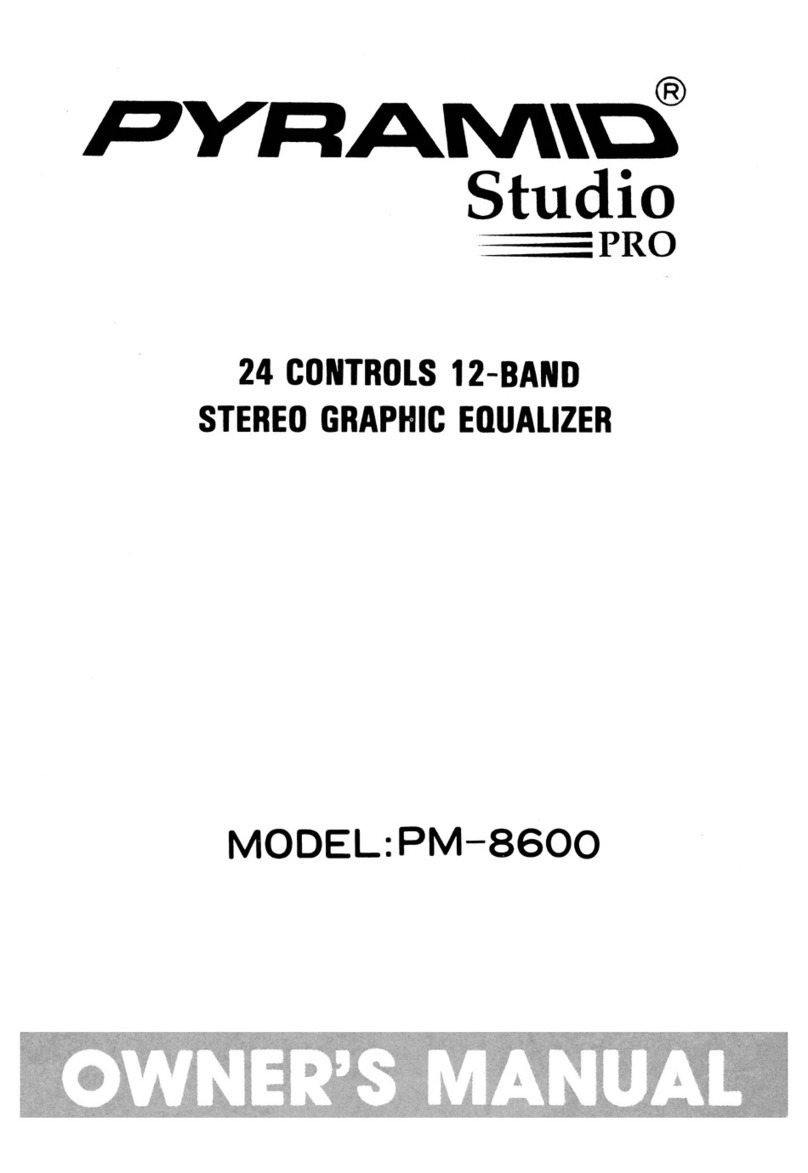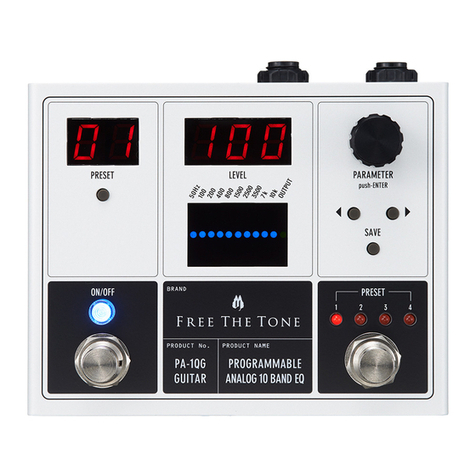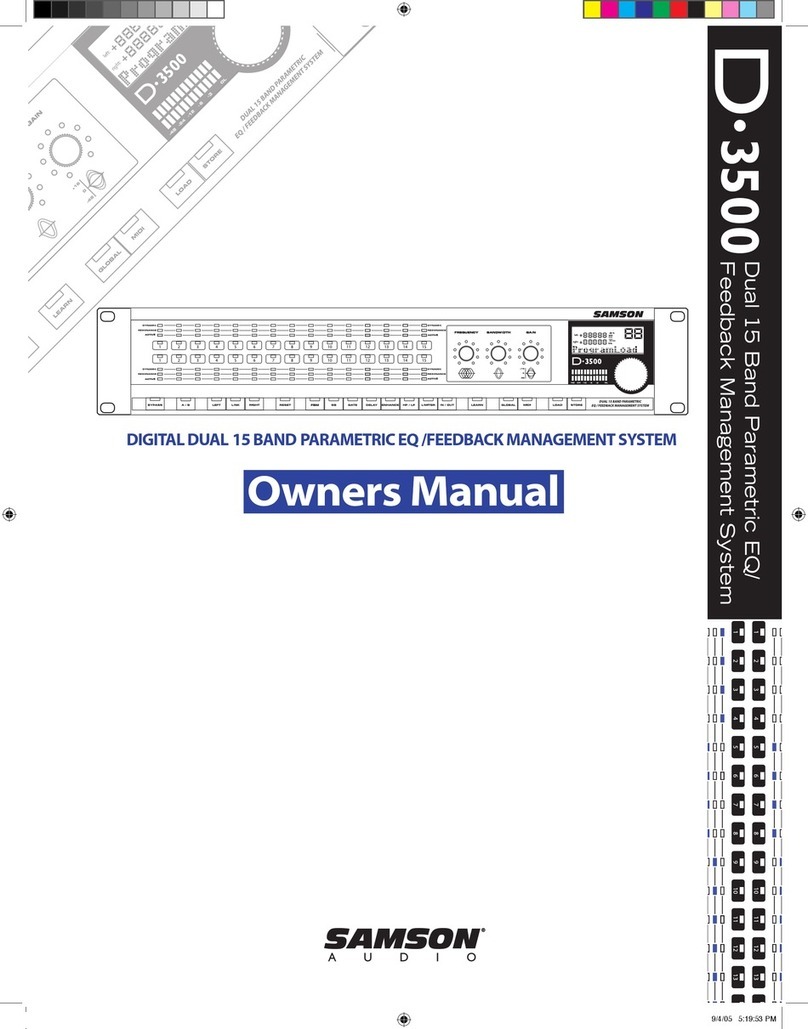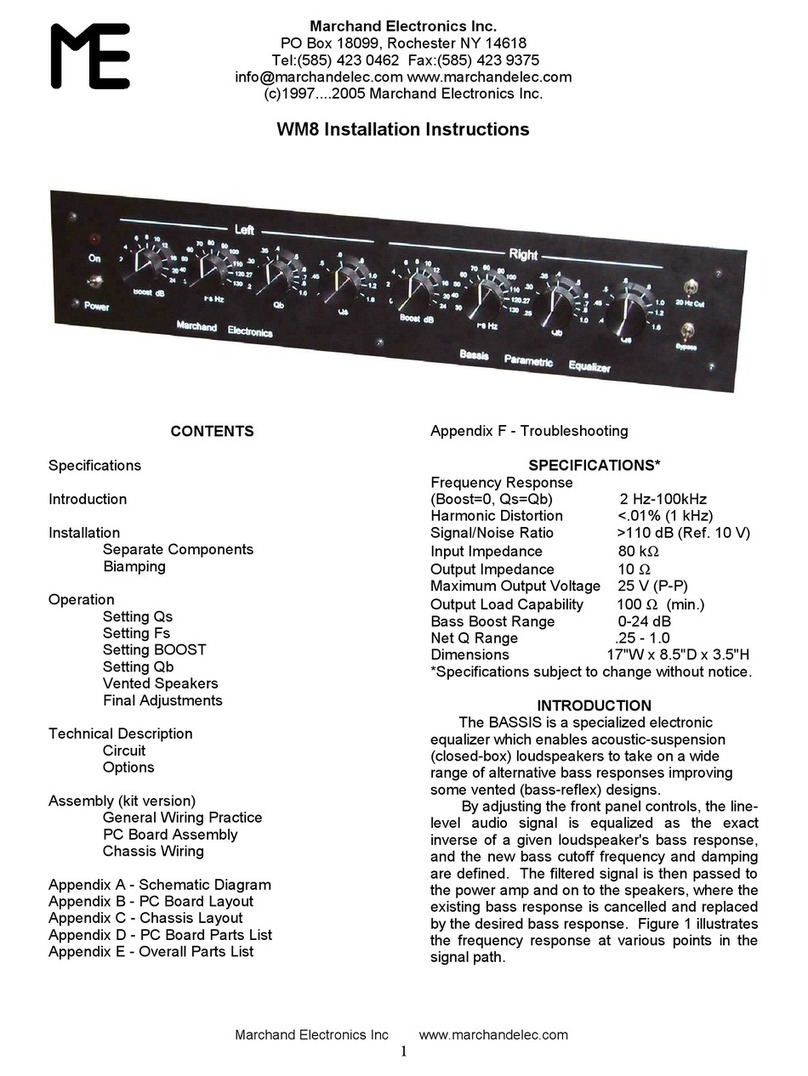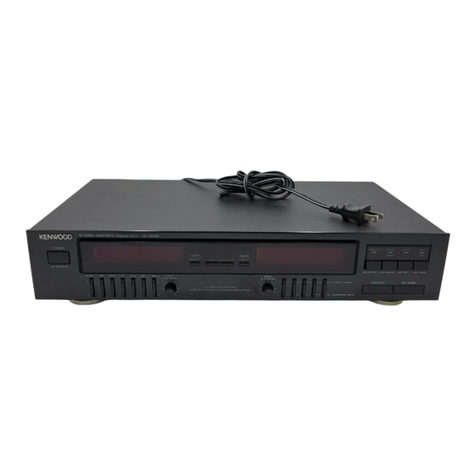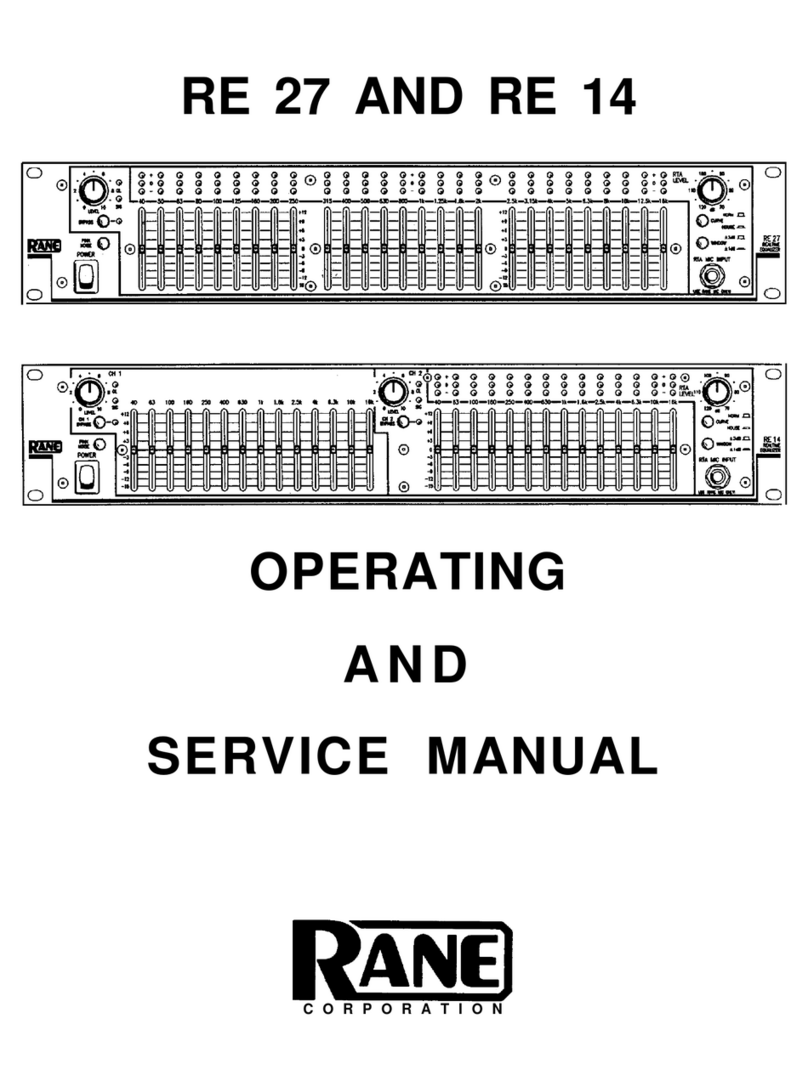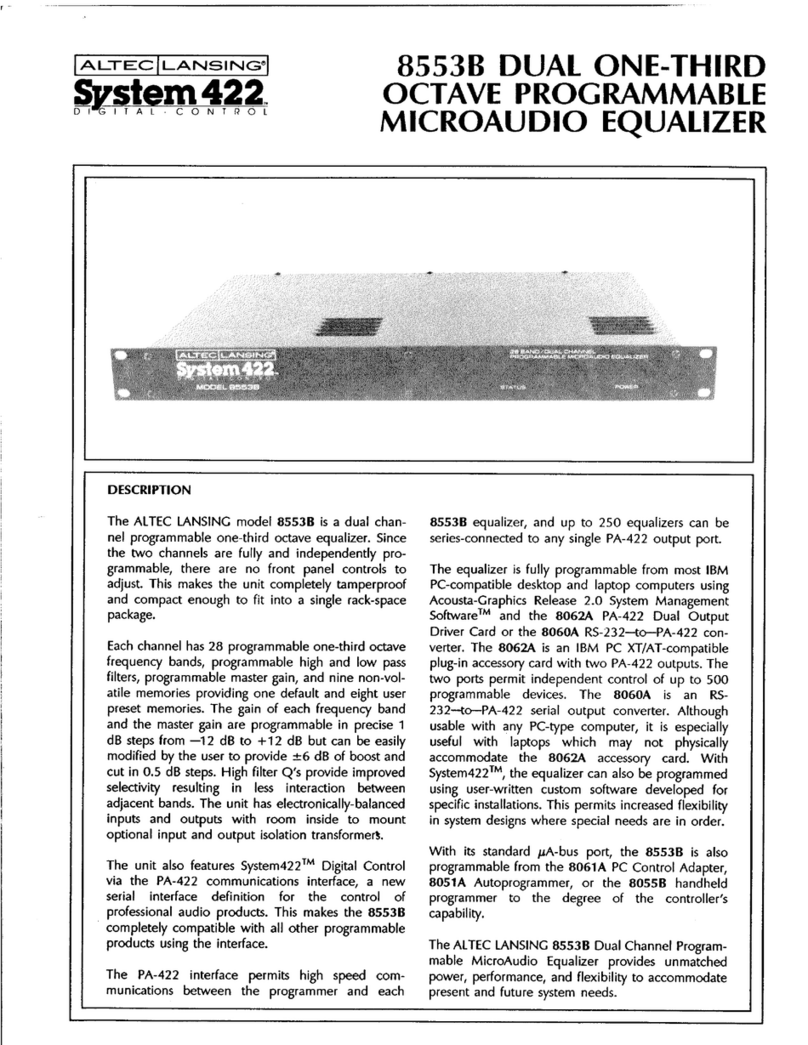6
ULTRA-Q PRO PEQ2200
1. INTRODUCTION
With the BEHRINGER ULTRA-Q PRO ou have purchased an extremel musical and flexible parametric
equalizer. Our ULTRA-Q range of devices has been a hit ever since we introduced our first model about 5 ears
ago. This high-end equalizer is based on man ears of experience and findings in filter technolog and is used
throughout the world in renowned studios, sound reinforcement s stems as well as in broadcast and television
studios. Improving the legendar ULTRA-Q even further was a real challenge, and we are proud of our success.
The BEHRINGER ULTRA-Q PRO meets highest and no-compromise requirements in terms of operation,
sound, specifications and workmanship.
Future-oriented BEHRINGER technology
Compared to its predecessor models, the ULTRA-Q PRO not onl has additional features, but also comes with
dramaticall enhanced audio qualities. For example, it uses a refined filter concept and select components.
The heart of the ULTRA-Q PRO is an extremel low-noise filter circuit based on our well-known state-variable
filters that produce a highl transparent sound. In combination with the constant Q principle, the operational
amplifiers 4580 and a sophisticated circuit topolog , the ULTRA-Q PRO ields excellent noise and distortion
properties!
State-of-the-art production processes
For the first time ever, the ULTRA-Q PRO is now manufactured with SMD components (Surface Mount Device).
Using these sub-miniature components known from aeronautics does not onl ensure extreme packing
densities, but also improves the ULTRA-Q PROs reliabilit .
Features of the BEHRINGER ULTRA-Q PRO
Parametric equalizers represent the most advanced form of equalization s stems. Basicall , the user has
control over the three parameters that define the so-called Gaussian equalization curve: bandwidth, frequenc
and amplitude boost/cut. Unlike graphic equalizers which provide a series of adjacent frequenc bands to
approach a specific frequenc , parametric equalizers allow for selecting a specific frequenc directl . The can
be used to realize complex frequenc curves with highest precision. Although the acoustic results of specific
equalizer settings cannot be predicted as easil as on graphic equalizers, parametric EQs are professional
audio tools of highest qualit . It will certainl pa to invest some time to stud their functioning principle and get
a feel for the wa in which the can be used to modif the program material.
The BEHRINGER ULTRA-Q PRO gives ou a combination of all technical properties both of parametric
equalizers and of narrow-band notch filters. With its excellent audio qualit and outstanding specifications it is
simpl better than an conventional equalizer. The ULTRA-Q PRO can be used to make up for frequenc
response deficiencies and to creativel process an audio material, thus giving ou undreamed-of equalization
flexibilit . It is a highl efficient and all-purpose tool both in creative audio processing in broadcast and televi-
sion studios, in video post-production and on stage. Each of its five bands can be freel adjusted in qualit :
from extremel narrow to broad-band. The ULTRA-Q PRO is superior to graphic equalizers in all respects.
It also has two additional filters which enable ou to adapt the entire frequenc response to meet our specific
application. These low and high-cut filters have a slope of 12 dB/oct. and can be varied in a wide frequenc
range. Practice has shown how important this feature is, as most acoustic problems are encountered in the
extreme low and high frequenc ranges. T pical frequenc response, hum or feedback problems must be
handled differentl . The additional low and high-cut filters allow for a broad-band correction of the frequenc
curve, while the parametric filters can be used to process narrow frequenc bands (mains hum, feedback,
etc.).
The Constant-Q principle
One of the most important features an graphic or parametric equalizer has to offer is the independent control
of the various filter parameters. The special state-variable filters of the ULTRA-Q PRO use the so-called
Constant Q principle which prevents the parameters frequenc , bandwidth and amplitude from influencing
each other. In the same wa , the mutual influence of the individual frequenc bands is avoided, which is a
fundamental requirement as it allows for clearl defined and repeatable filter settings.
The concept of parallel filters
Unlike conventional parametric equalizers the ULTRA-Q PRO features a parallel filter configuration, which
offers a decisive advantage over series-t pe configurations: with parallel filters it is possible to reduce to a
minimum the phase shifts and dela s usuall associated with filters.
1. INTRODUCTION
